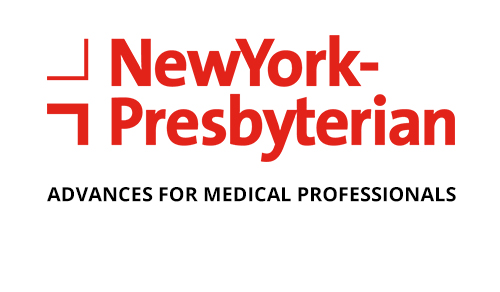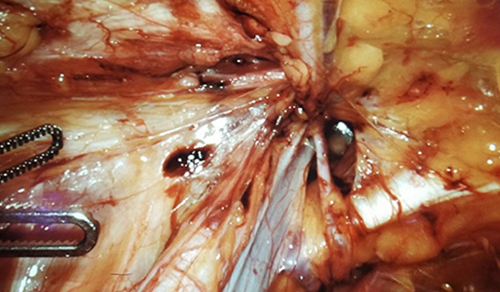Pediatric Cataracts: Management Challenges and Treatment Approaches

Dr. Erica L. Oltra
Cataracts in children cause more visual impairment than any other form of treatable blindness and, according to the American Association for Pediatric Ophthalmology and Strabismus, infantile and childhood cataracts affect approximately 3 out of 10,000 children. “Children’s eye conditions present a unique set of challenges,” says Erica L. Oltra, MD, a pediatric ophthalmologist in the Department of Ophthalmology at NewYork-Presbyterian/Weill Cornell Medical Center. Those challenges — particularly in the surgical management of pediatric cataracts and anterior segment eye disease — are what attracted Dr. Oltra to the specialty.
“Most of my young patients will never remember my help, but I feel good knowing that my efforts can benefit them for a lifetime.” — Dr. Erica L. Oltra
“I became interested in ophthalmology because I found the microsurgical techniques to be so elegant and precise, and I enjoyed seeing immediate results after surgery,” says Dr. Oltra, who completed her ophthalmology residency at the Illinois Eye and Ear Infirmary, where she served as Chief Resident. After residency, she pursued a fellowship in pediatric ophthalmology and adult strabismus at the Jules Stein Eye Institute at UCLA. “Importantly, pediatric ophthalmology requires early diagnosis and accurate management to get the best long-term results and the best vision for patients. If you don’t catch these eye conditions in time, they can result in adults with poorer vision than they could have had if the condition had been addressed sooner.”
Cataracts in children can be classified using a number of methods, including age of onset, etiology, and morphology. Congenital cataracts are responsible for 10 percent of all visual loss in children worldwide. They can be isolated or associated with systemic conditions, including chromosomal abnormalities, or with other ocular anomalies, for example, persistent fetal vasculature, coloboma, anterior segment dysgenesis, and aniridia. Even despite a complete systemic workup for those without a family history, it is often difficult to identify the cause. Infantile cataracts may be present at birth or develop afterwards. The prognosis, says Dr. Oltra, is better if the cataract is not dense in the first three months of life.
Managing Pediatric Cataracts: Delicate Decisions
The management of congenital cataracts is very different from the traditional treatment of age-related cataracts, notes Dr. Oltra. “Timing of surgery is critical. We usually don’t perform surgery until a child is at least one month old because we could be putting that child at a higher risk for developing glaucoma and intraoperative complications. We also don’t want to wait too long because there may be some irreversible amblyopia that can occur.”
“The visual connection between the eye and the brain must be maintained from a very young age in order to develop good vision,” says Dr. Oltra. “Deciding when to perform surgery for a baby born with cataracts is a balance between the risk of amblyopia and the risk of glaucoma. Generally, the right time is about four to six weeks of age with a unilateral cataract and six to eight weeks for bilateral cataracts.”
Trauma continues to be a major cause of cataracts in children. The disruption of the lens capsule forms cortical changes that may remain focal if they are small or progress to total cortical opacification. “After a trauma, or if a child has Marfan’s syndrome, for example, there may not be a lot of support to hold an intraocular lens,” says Dr. Oltra. “What we can do is suture a lens into the eye, which is done often in adults. The problem in a child is that after many years, those sutures can erode through the sclera or break, putting the child at risk for endophthalmitis and lens dislocation.”
Dr. Oltra points to iris fixation of an intraocular lens, specifically the Artisan lens, currently under study in clinical trials as a treatment for pediatric aphakia when there is insufficient capsular support. “Studies show that it’s safe and effective in children and it may last longer and have greater durability than a sutured lens.”
According to Dr. Oltra, other advancements in microsurgical technology and techniques over the last decade have helped to refine pediatric cataract surgery. “Our tools are getting smaller and smaller, which is very important because you’re putting them into a newborn’s eye which is already very, very small,” says Dr. Oltra. “Since infant corneas are very prone to collapsing during surgery, the smaller we can make the incisions and the more watertight they are, the more stable the surgery is.”
Dr. Oltra uses the same phacoemulsification machine in pediatric surgery that is used in adult cataract surgery, adjusting the settings to accommodate a child’s cataract, which is much softer and tends to aspirate easily. “One complication common in children is secondary membrane formation,” says Dr. Oltra. “Children will have a lot of inflammation in the eye postoperatively. If you don’t get it under control with injected or topical steroids, a membrane can form over the visual axis, possibly requiring another surgery to remove it. Control of inflammation after surgery in children is extremely important.”
The long-term refractive outcome is variable, says Dr. Oltra, and the physician must use available information at the time of surgery to predict future refraction. “We are trying to better understand how performing surgery on a baby’s eye will affect the way that it grows and then decide the power of the lens to implant so that the eye will be as close to emmetropic as possible when the child’s eye stops growing,” she says. “It’s very hard to predict.”
Postoperative Care and Rehabilitation
Since uncorrected refractive error in early childhood can lead to amblyopia, attention to appropriate refractive correction after cataract surgery is critical in obtaining good final visual acuity. Dr. Oltra’s refractive management includes:
- Aphakic contact lenses within 1 to 2 weeks
- Glasses or contact lenses if pseudophakic
- Overplus to leave the child slightly myopic
- Bifocal segment for children over 3 years old
For unilateral aphakia, Dr. Oltra prefers contact lenses because of the distortion that comes from glasses. “Glasses can be an option and the child should have a backup pair even if he or she is wearing contact lenses,” she says.
Visual rehabilitation for amblyopia includes patching. “You have to patch the better eye to treat and prevent amblyopia,” says Dr. Oltra. “It won’t matter that you caught the cataract early and did a perfect surgery if you don’t have proper visual rehabilitation afterwards.”
Dr. Oltra considers parents key partners in achieving a good visual outcome. “We tell parents that we’re forming a long-term relationship with them. The surgery is actually the easy part. It’s the aftercare that’s the hardest and the most important. It generally involves years of doctor visits, ongoing patching, and continual updating of contact lenses and glasses. Most of my young patients will never remember my help, but I feel good knowing that my efforts can benefit them for a lifetime.”
Related Publications







